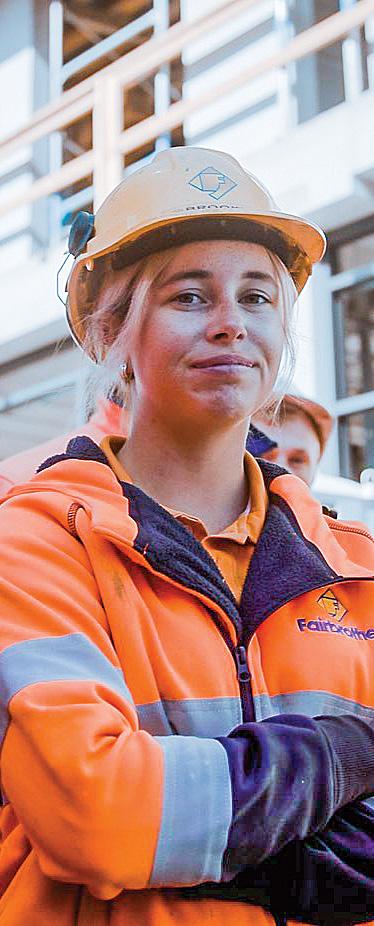
2 minute read
Improving gender diversity in the workforce
In an environment of acute workforce shortages and recruitment challenges, the building and construction industry needs to ensure it can attract talent from the full suite of Australian workers.
Despite this acknowledgement construction continues to be male dominated. Just 13.3 per cent of workers in the industry are female. However, the split is not even across occupation groups. One in four professionals are female, while for machine operators it is one-in-31.11
The low proportion of women in some occupation groups in the construction industry presents an opportunity to meet future workforce needs.
To harness this opportunity the barriers to female entry and retention in the industry need to be addressed. These include perceptions around the physical demands of the work as well as unfavourable aspects of the workplace culture and its flexibility arrangements. There are a wide range of initiatives being led by governments and industry to encourage more women into the building and construction industry, and in particularly into traditionally male dominated roles.
7 Joyce, 2019. Strengthening Skills: expert review of Australia’s vocational education and training system.
8 Year13, 2017. After the ATAR: Understanding how Gen Z transition into further education and employment.
9 Year13, 2017. After the ATAR: Understanding how Gen Z transition into further education and employment.
10 Clarke, 2015. Careers education must be for all, not just those going to university.
11 ABS, 2023, Labour Force Australia Detailed, February 2023. Released 23 March 2023.
12 NCVER, 2022. Apprentices and Trainees, September 2022.
Initiatives such as Master Builders Australia’s Women Building Australia program are helping to dispel misperceptions about the industry, encouraging more women into construction, sharing the stories of women in the industry, supporting retention through mentoring, and nurturing career progression and business resilience.
These efforts are translating into more women in construction training pathways. In the year to 30 September 2022, 4,576 females commenced a construction apprenticeship or traineeship, 8.3 per cent of construction commencements.
2,220 of these women commenced a trade apprentices, the highest number on record nearly four times the 20-year average to 2021 of 599.12
Master Builders encourages the Government to think outside the narrow lens of gender targets for individual projects to identify options that will grow the pool of female and other under-represented workers in the industry. For example, through the Australian Skills Guarantee or other initiatives the government could consider:

• incentivising medium and large employers to improve diversity across their whole workforce, not just the workers on a specific project.
» This approach reduces the likelihood of underrepresented workers being moved between projects to meet procurement targets, improving workforce stability and retention.
» Restricting the initiative to medium and large employers reflects the greater number and diversity of roles within these businesses and their organisational capability to support diverse employees and to meet reporting requirements.
» This approach could also be implemented to lift the proportion of males in female dominated roles, such as administrative support.
• including non-price criterion in tender documents that enable industry to propose options to attract more females into the building and construction industry and therefore to grow the pool of workers.
» For example, in Queensland there is a Tier 1 construction company that runs a school-based program for female students. Students are shown through the different stages and roles of construction projects to improve understanding and interest. This program is translating into women entering the industry.
Recommendation
Master Builders is concerned that targets for females on government funded projects will lead to employers competing over the same pool of workers (such as poaching female workers from private sector projects to public sector projects), rather than expanding the pool. The focus at the moment needs to be on growing the pool of female workers across the entire building and construction industry.










